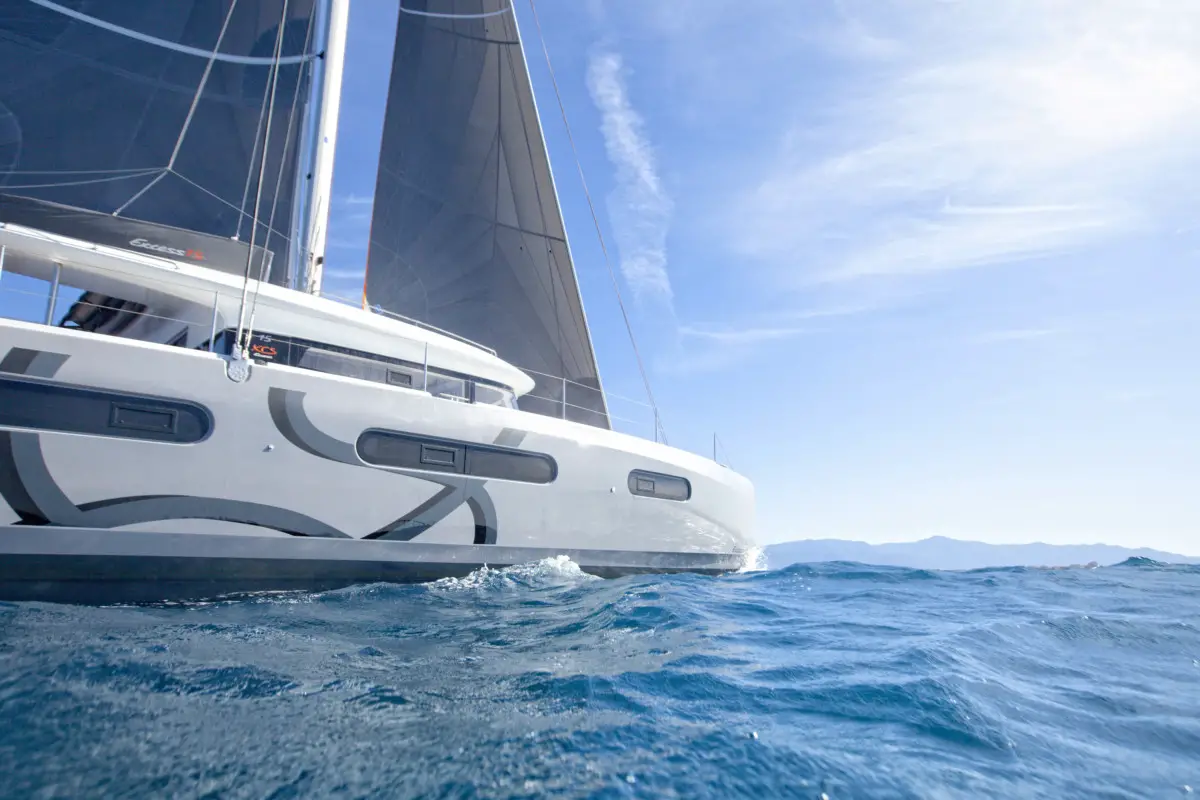As an Amazon Associate, we earn from qualifying purchases. We may also earn commissions if you purchase products from other retailers after clicking on a link from our site.
People interested in sailing under the most comfortable and relaxing conditions will most likely opt for a catamaran. And with good reason. A catamaran is arguably the most popular vessel choice for safe, spacious, and longer cruising trips.
Catamarans are not hard to sail compared to monohulls due to their superior stability, ease of handling, maneuverability, and visibility from the helm. They can outrun bad weather and deliver a first-rate sailing performance. The most notable downside is catamarans have difficulty sailing close to the wind.
In this article, I summarize what the sailors that I have spoken to say about the ease of catamaran sailing, how they compare to sailing monohulls, and why you should consider a catamaran. The discussion also includes the downsides of sailing these luxurious cruising vessels and tips on how to get the best sailing experience.
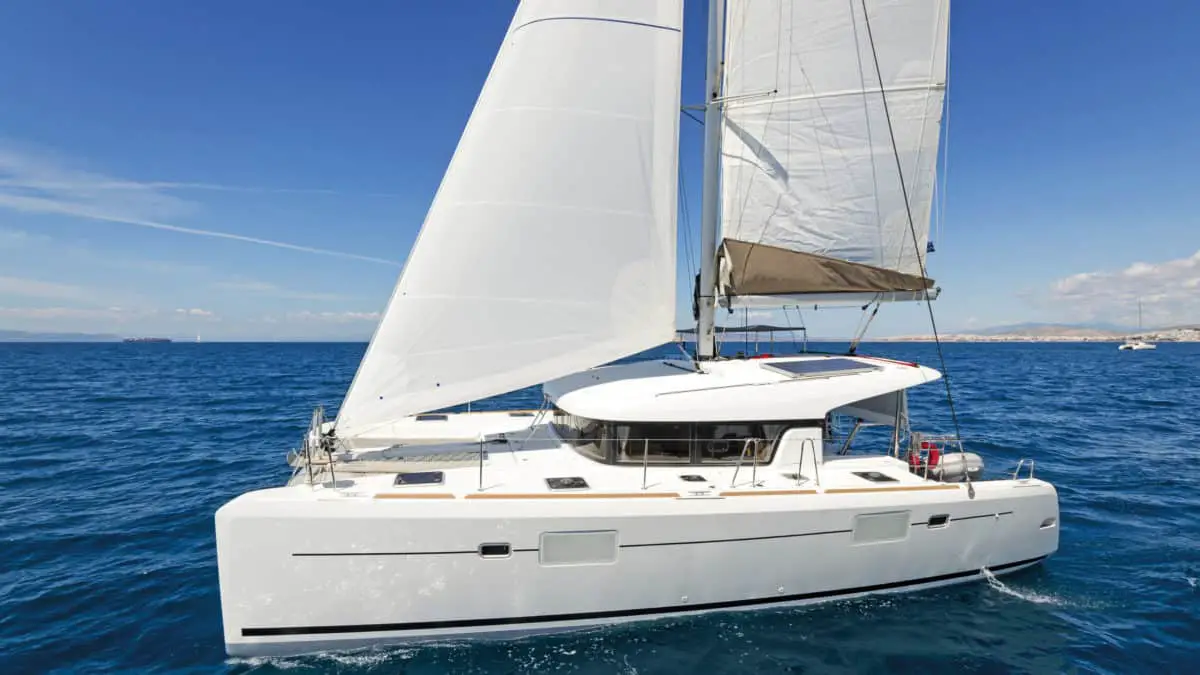
What Makes Catamarans Easy To Sail?
Catamarans Are Highly Stable
Catamarans comprise two hulls which makes them extremely stable. Their inherent stability allows them to deliver a smooth and comfortable sailing experience since they don’t heel but instead maintain a level stance. This means you’ll be able to move around the boat easier while sailing because you won’t have as much tilt to create a fight against gravity!
The boat’s stability also helps minimize motion sickness and the risk of falling, which makes sailing much more comfortable and safe. Especially if sailing with families, including younger kids and seniors, this will make the experience all that more enjoyable.
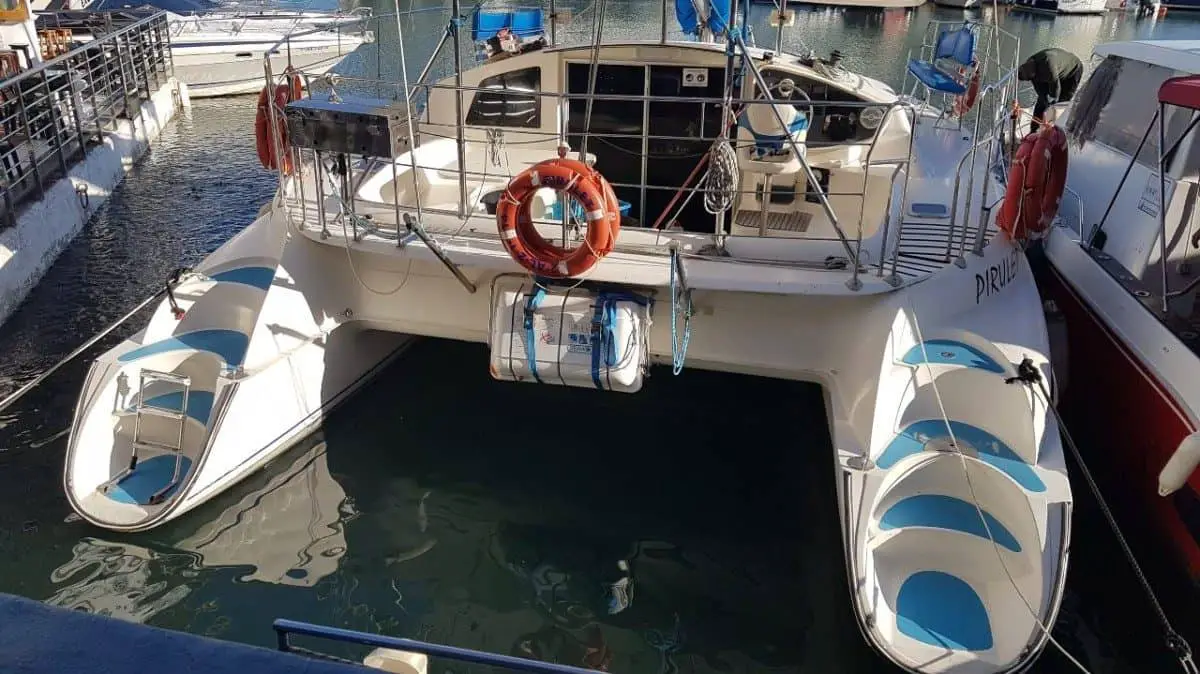
Catamarans Have Double Engines
A catamaran contains an engine on each hull. Because of the twin engines – and twin rudders- catamarans are usually easy to maneuver into bays and harbors. While at the bay, they remain stable even as keel sailboats rock back and forth due to wave action.
The engines and rudders are also far apart, making maneuvering in narrow spaces like inside a marina much easier. Moreover, the location of the engine and sail drive in a catamaran affects pitching when the vessel is underway. Hence for better weight distribution, a central location is desirable.
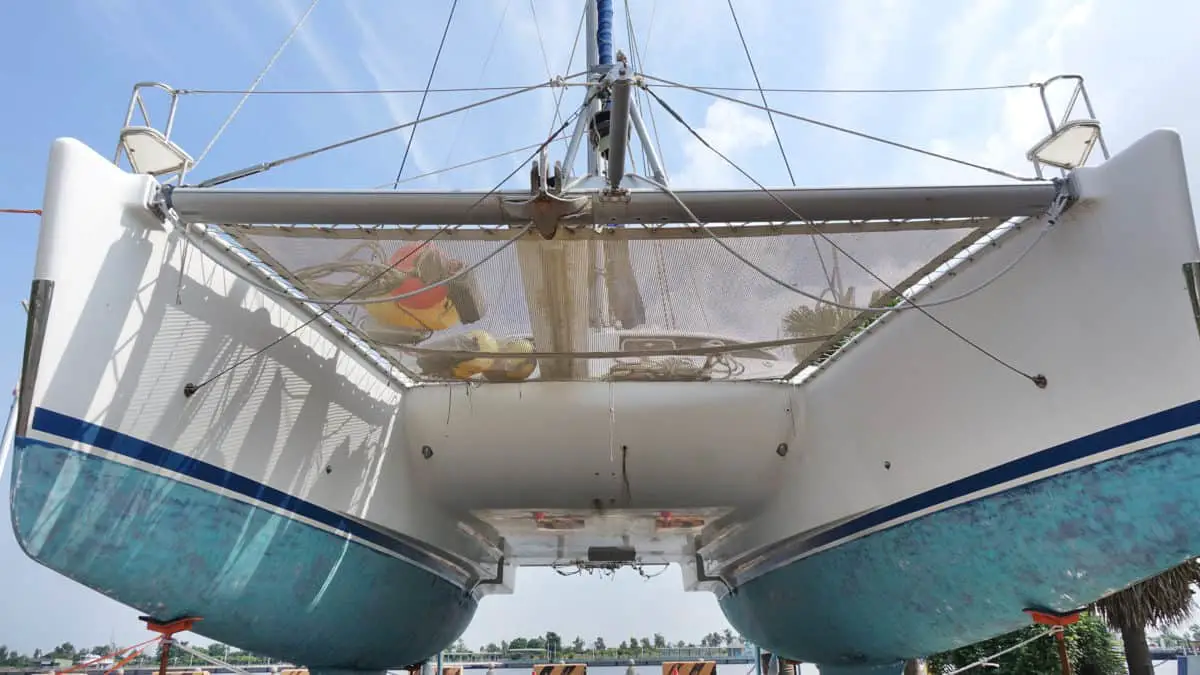
Catamarans Are Almost Unsinkable
Modern cruising cats are safe, sea-worthy vessels designed to safeguard against capsizing. To this end, they have a low center of gravity, while their power-to-weight ratio helps to ensure that the hull remains stable and secure in any conditions.
Production catamarans also boast incredible amounts of in-built buoyancy and roll inertia, making it quite difficult for them to sink. Furthermore, since the two hulls are independent, a catamaran will simply float if one hull gets a leak or suffers damage. However, if a large catamaran gets overwhelmed and capsizes, it’s usually not able to right itself up again as a monohull does.
Catamarans Have Shallow Drafts
A catamaran’s shallow draft means that the boat doesn’t need to have a lot of water beneath it. This enables you to anchor in shallow waters. As such, you can pull anchor much closer to the beach with no fear of rolling during the night. Furthermore, its dual engines and rudders make docking such a simple affair that a bow thruster is unnecessary.
Another exciting feature is the high bridgedeck clearance which helps reduce the noises formed by slapping waves. This is more of an issue when sailing upwind and could cause concern during rough sea conditions.
Additionally, heavier boats experience heavy slamming while lighter boats ride the wave due to their higher buoyancy, thus reducing the slamming effect. In general, 30 inches (76.2 cm) of clearance is suitable for most catamarans.
Want to know how to park your cat on the beach?
Catamarans Allow for Excellent Visibility
Most modern catamarans come with a raised or flybridge helm. The flybridge houses the steering wheel plus all the necessary navigation instruments. It also provides exceptional visibility from the helm position, thanks to the abundant lighting and panoramic views.
Catamarans Have Ample Storage Space
The space between the two hulls makes a catamaran quite roomy and also creates additional living space. As such, the galley, main salon, and cockpit areas are quite spacious. The control panel is within easy access, and it’s easy to communicate with the crew in the deckhouse, on deck, and the saloon.
The extra space also means that there’s ample storage space to ensure that everything is kept well organized and out of the way. The wide, clear gangways also ensure your safety as you walk around the vessel.
Hence, there’s no reason to stow things haphazardly or use bungee cords to help keep stuff in place. What’s more, even in rough seas, most things remain in place. This enhances crew safety as there’s no fear of being knocked over by falling equipment.
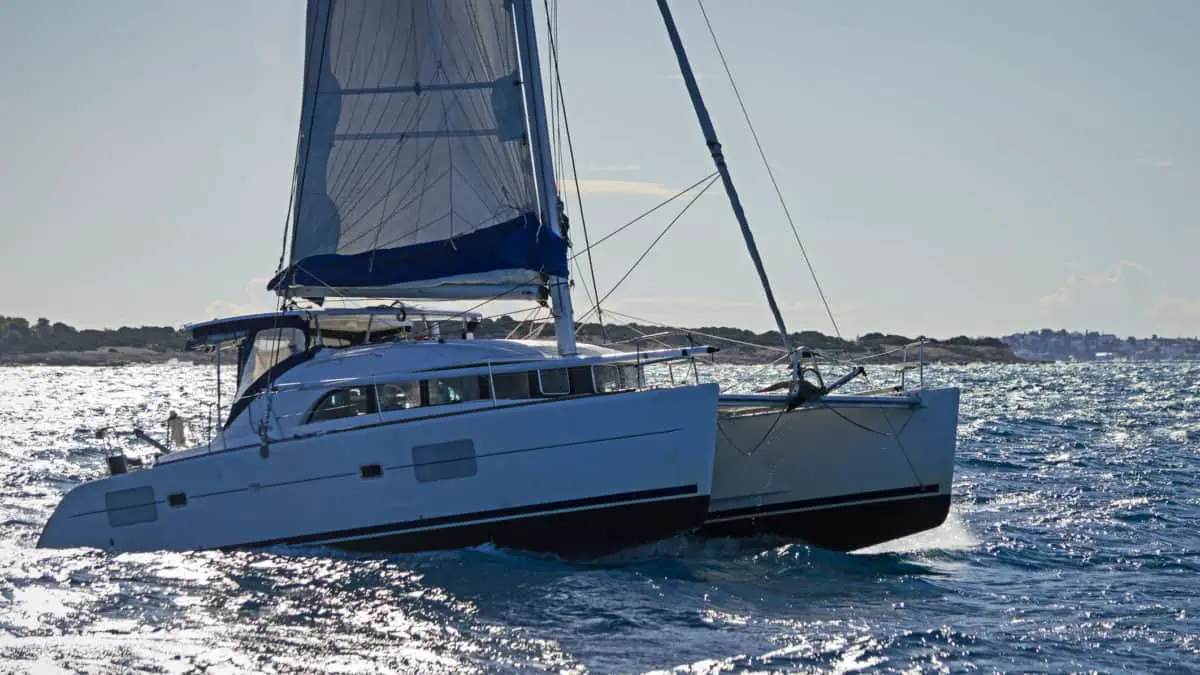
They’re Quite Fast
A catamaran can sail 200 miles a day on passage. What this means is that a catamaran moves fast, enabling you to reach your destination on time. What’s more, you can outrun heavy weather pretty easily or get yourself in a position that allows you to avoid the worst of the storm. In any case, today’s advanced weather forecasting technology will enable you to avoid bad weather conditions.
A cat can move so fast because of its design; there is little of the boat under the waterline. In other words, there’s not much hull space in the water, which allows for much less resistance from the water. The narrow hulls also allow for faster displacement speed.
In addition, because modern catamarans use composite materials in their construction, they’re lighter, faster, and have less drag. The lack of a deep keel also means that they can float much higher on the water, thus contributing to a lower wetted surface and faster speeds.
Catamaran Systems Allow for Redundancy
Most of the essential navigation systems necessary for onboard safety come in duplicates, which make emergencies in a catamaran much easier to cope with. Engine failure in a catamaran is not catastrophic because the boat sports two engines. You simply maneuver the boat with the remaining engine.
In addition to moving the boat, you can also use this engine to charge your batteries. Likewise, if one rudder malfunctions, you can steer with the second rudder or the engines. The only downside to catamaran redundancy is the high repair and maintenance costs.
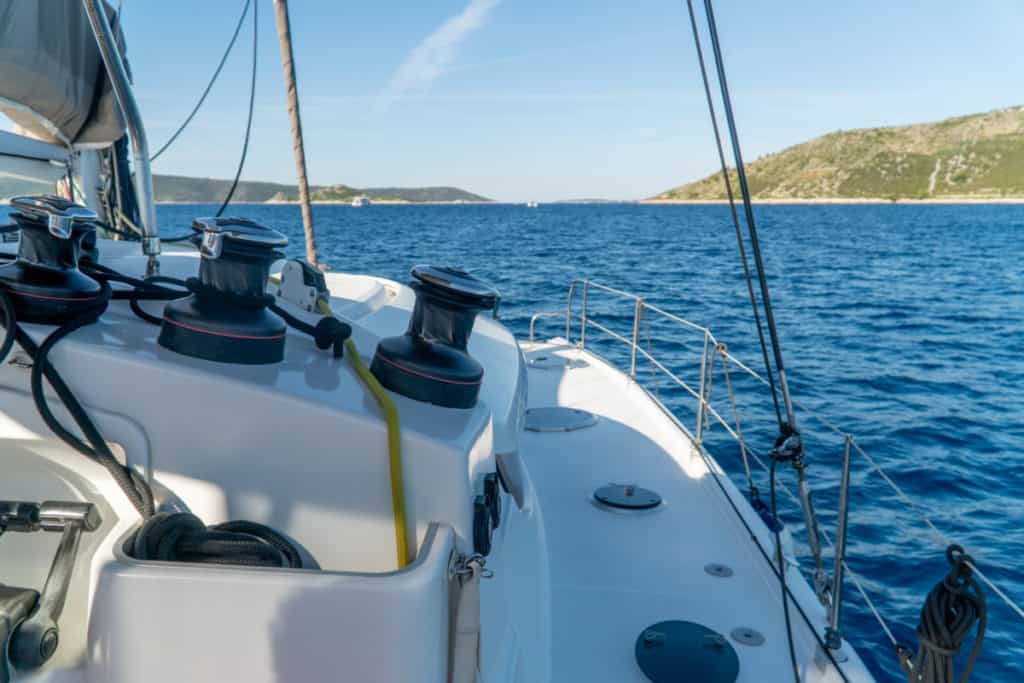
Catamaran Solo Sailing
As the helmsman on a catamaran, you can perform all sailing maneuvers single-handedly. This is because, with most modern catamarans, all the necessary control lines head back to the helm or cockpit. Plus, if you require additional assistance, you can always rely on autopilot.
What is the largest catamaran one person can safely sail?
Having control lines within easy reach is crucial because you may need to act quickly to keep the boat under control when the seas get rough. Sails should also be easy to reef or furl, as you may need to strike sail under hazardous weather conditions, and it’s best if you can do so from the cockpit.
How to setup and solo sail your catamaran!
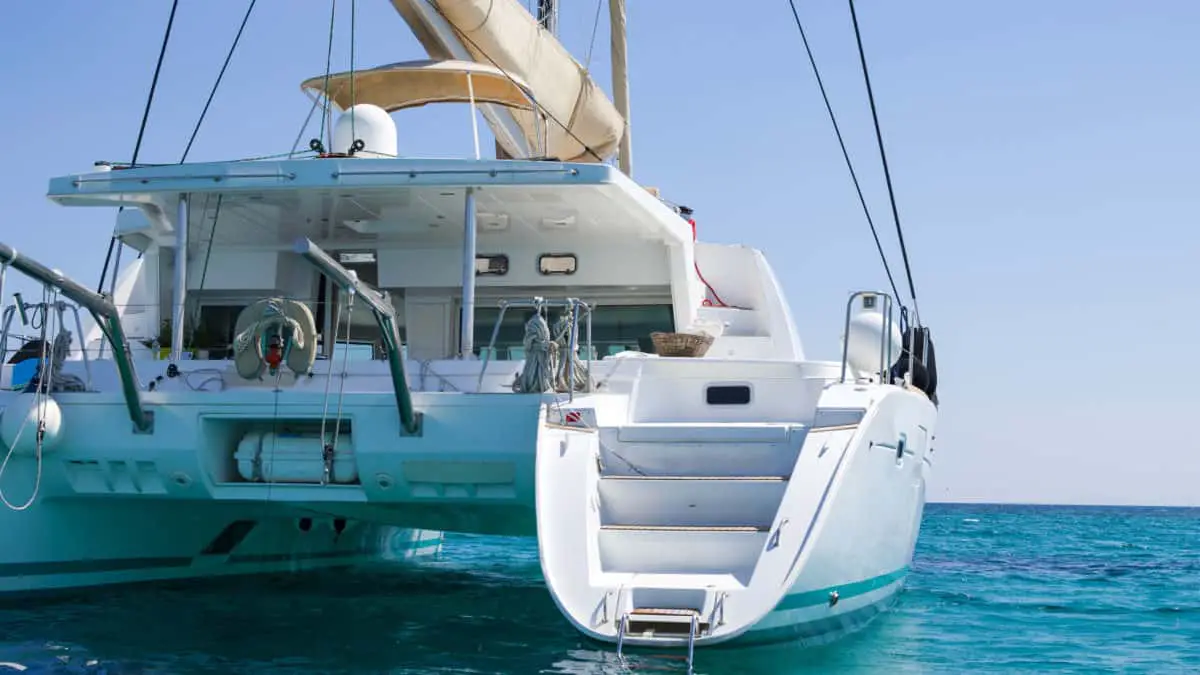
Catamaran Crewed Sailing
A tired and overworked crew is a liability on a sailing vessel. Fortunately, there is hardly any crew fatigue on a catamaran since the crew manages to get a good night’s sleep even when the seas get rough. Besides, sail changes and reefing become more manageable and safer when you’re working on a stable platform as there’s minimal risk of serious injuries or falling overboard.
An alert crew thus contributes to a safer vessel. Still, while a catamaran will not easily flip or capsize, the boat requires a skilled and attentive crew in severe weather.
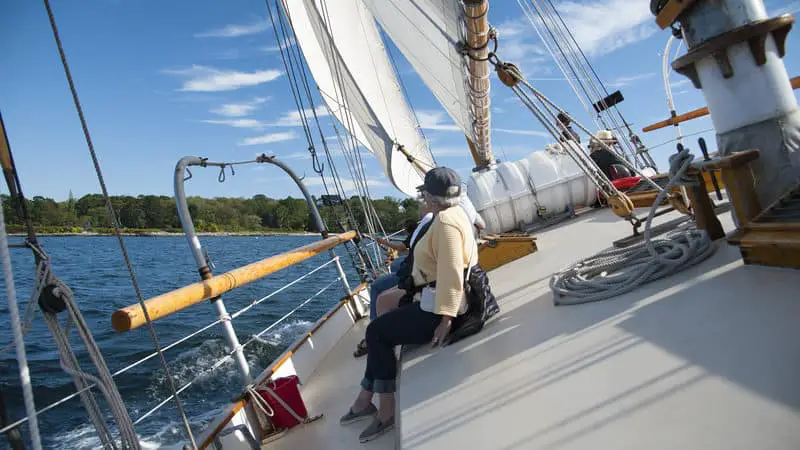
Are Catamarans Harder To Sail Than Monohulls?
Those who have sailed both these vessels consider sailing a catamaran to be easier than sailing monohulls for two major reasons.
- Monohulls don’t have as much space as catamarans; hence the cockpit is not as spacious or comfortable.
- Monohulls tend to heel, particularly during strong wind conditions. The heel makes it harder to manage sailing tasks such as reefing, winching, or moving the boat about.
But that’s not all. Catamarans have several other notable advantages over monohulls, such as:
- Sailing a catamaran is less tiring.
- They can sail in shallower waters.
- They can make a 360 degrees turn.
- They move faster when sailing downwind and across broad reaches.
- You can rely on one engine in case of engine failure.
- The minimal wetted surface area on catamaran hulls makes them more fuel-efficient.
- They’re easier to maneuver than deep-keeled monohulls, which heel in strong winds making sailing difficult.
- Modern catamarans may not be self-right, but their positive buoyancy prevents them from sinking in the unlikely event they capsize.
Why Should You Choose a Catamaran?
Catamarans are popular in the sailing world because they’re high-quality offshore cruising vessels. Highly innovative and built to the highest quality standards, these luxurious boats are incredibly spacious. This makes them ideal for families or couples keen on making ocean crossings or taking a cruising vacation.
In either case, 42- 48-foot (12.8- 14.6-meter) catamarans make for unique floating homes due to their high load-carrying capacity. Smaller-sized cats might not have sufficient ability to carry the required loads, while larger ones might prove prohibitive in terms of equipment costs.
Other favorable qualities that make catamarans appeal to many people include the following:
- The uncluttered, flat decks make the vessels much safer offshore.
- The separate hulls offer privacy, making it easy to accommodate big families or extra guests.
- Some sailors might be interested in using the catamaran as a motorboat only – without using the sails.
- The seating options available on the bridge deck make it possible to relax as you take in the scenic views.
- The passages are safe, and there’s no climbing involved when moving from the bow to the stern.
Downsides of Sailing Catamarans
Under the right conditions, catamarans deliver a smooth and comfortable sailing experience. However, since they don’t heel, the sailing experience is somewhat different when compared to sailing a monohull. And because the boat’s motion is different, you need to trim your sails differently, too, and pay keener attention to other sailing factors.
Also, it’s more challenging for a catamaran to make headway when sailing upwind or under light wind conditions. Again, since the vessel seems not to react to strong winds, it can be difficult to figure out when to reef so as to avoid getting overwhelmed; hence you need to always keep your eye on wind speed to enable you to reef early. Moving upwind can also be a bit uncomfortable since each hull rides the wave at its own time.
One thing to note here is that charter or cruising catamarans don’t fare well with windward sailing. These boats sport shallow drafts, small rudders, high flybridges, integrated fixed keels, forward masts, shorter bows, and heavier displacements.
On the other hand, high-performance cruising cats sail windward with no hassles. They feature deep rudders, efficient daggerboards, and less displacement. The daggerboards enable the cat to point slightly higher, enhancing speed in a narrow, upwind steering angle. Ultimately, the most effective way to maintain crew safety in any sailing condition is by paying special attention to your sail selection.
Let’s look into more disadvantages of sailing catamarans below.
Catamarans Provide Less Feedback
As mentioned earlier, a catamaran doesn’t provide you with as much feedback from the wheel as a monohull does. So, when you’re sailing during stormy weather, you need to be vigilant. Doing so will help you avoid surfing down waves, burying your bows, or pitch polling.
A large-sized catamaran carries a lot of sail when moving downwind. It also uses a lot of force. Therefore, you have to keep a step ahead of the vessel, anticipate its behavior and adjust accordingly. In this regard, having a skilled and attentive crew goes a long way to ensure that the boat and everyone on board remains safe.
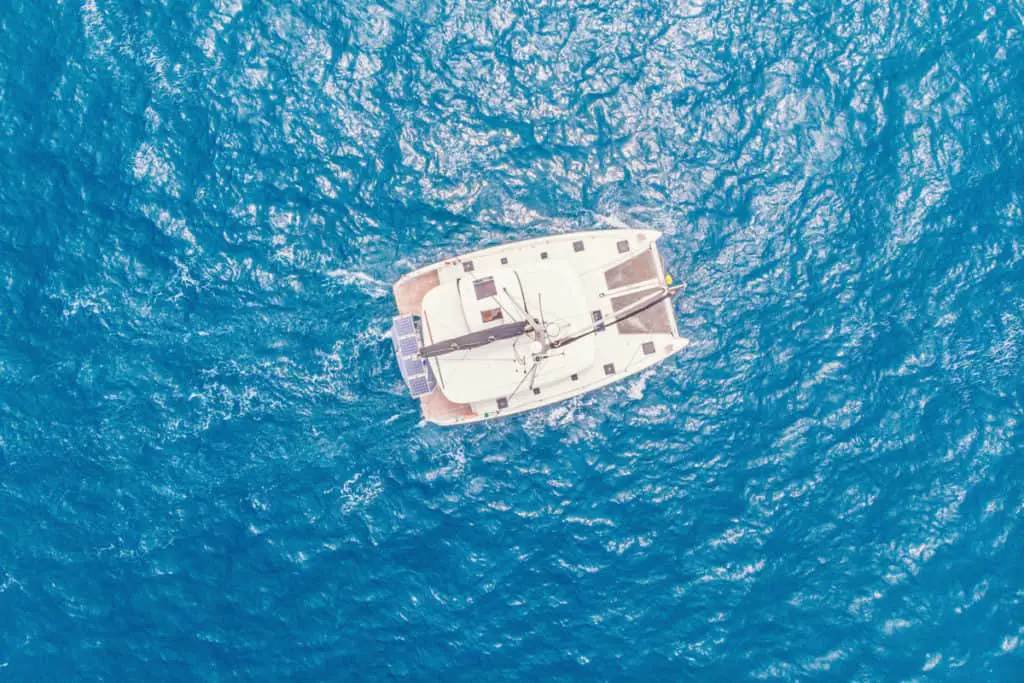
Catamarans Can’t Sail Too Close to the Wind
Monohulls sail pretty close to the wind, a feat that catamarans fail to achieve quite as well, especially when sailing upwind. Nonetheless, catamarans make up for this con with their faster speed. They often arrive at a given destination at the same time or earlier than a similar-sized monohull, even if they had to cover a longer distance.
Catamarans Can Easily Drift Off
Because of the large hull areas and shallow draft, sailing catamarans can drift off quite easily if exposed to strong winds. Their great wind resistance (windage) and less drag owing to lacking a keel make the wind more likely to blow them in an unwanted direction.
As a result, you may want to perform anchoring maneuvers during anchoring as soon as you can if the wind starts blowing from the side.
Watch the video below for more details:
Tacking a Catamaran Is a Little Bit More Difficult
Tacking a catamaran is more taxing than tacking a monohull. A boat requires enough speed to carry it through the tack without reducing its forward momentum. As such, a catamaran that fails to complete a tack successfully could end up pointing upwind ( stuck in irons), lacking in speed, and unable to maneuver.
You may need to switch on the catamaran motor during light winds or heavy traffic to help you get through the tack.
Watch the short video below to learn more about tacking a catamaran:
Locating a Suitable Berth for Catamarans Can Be Challenging
Due to its double hulls, a catamaran occupies double the space taken by a standard-sized monohull. Finding a suitable berth for your catamaran might not be that easy because you will need to get double space in some locations.
Consequently, marina fees could work out pretty steep for your catamaran; hence you may want to consider spending more time at anchor. You can access a lengthier dock near a wide channel or look for a secluded cove.
Tips To Enhance Your Sailing Performance on a Catamaran
While catamarans might not produce the super speeds of high-performance sailing boats, they still deliver a satisfactory performance when you apply simple sail trimming techniques. For instance, when sailing upwind, bearing a few degrees off can help make movement easier. Alternatively, you can opt to run the motor.
To achieve the best results when sailing your catamaran, follow these helpful tips:
- It’s better to use engine power instead of the steering wheel when maneuvering your catamaran in narrow spaces.
- Lowering your speed can reduce the pounding noise occasioned by wave action against the boat while sailing in heavy seas.
- Avoid carrying too much weight as this will slow down the boat.
- Keeping your catamaran clean and tidy helps to maintain maximum hull speed by avoiding issues such as marine growth or propeller damage.
- Make a point to learn your boat’s strengths, capabilities, and weaknesses to avoid pushing it to its limits and causing serious damage.
Final Thoughts
If you’re looking to make an ocean passage or charter a boat to cruise the Mediterranean, a catamaran makes an excellent choice for a sailboat. Their stability, comfort, generous spacing, and safety ensure you always have peace of mind whether you’re sailing alone or with family on board. Plus, catamarans are easily handled, with or without a crew.
So, go ahead, make your travel plans and get ready to enjoy an amazing time aboard this magnificent sailboat!

